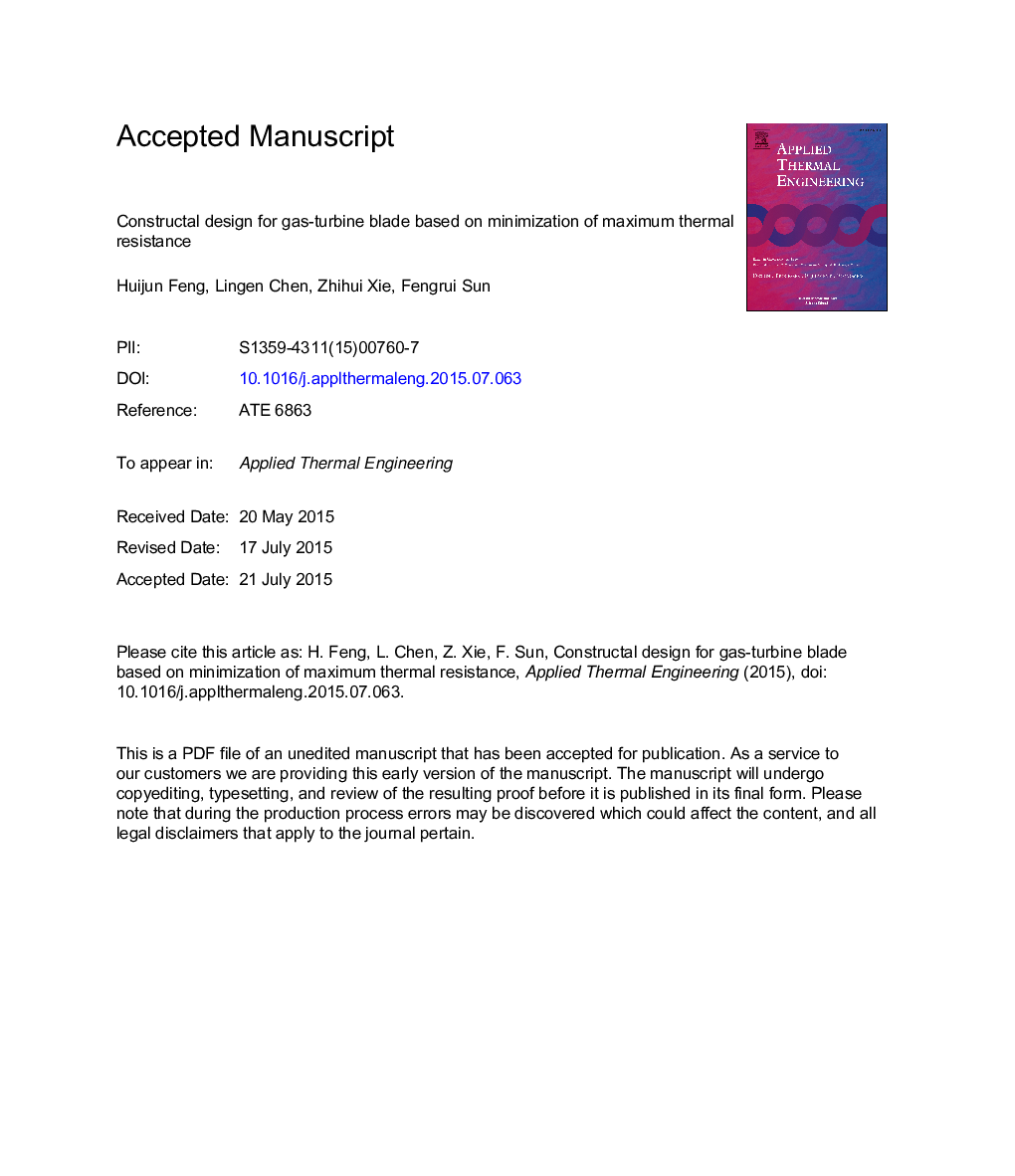| Article ID | Journal | Published Year | Pages | File Type |
|---|---|---|---|---|
| 7048889 | Applied Thermal Engineering | 2015 | 24 Pages |
Abstract
A gas-turbine blade cooling model is investigated based on numerical method. Constructal design of the elemental gas-turbine blade (EGTB) is implemented, and its optimal internal and external shapes are obtained. It shows that the maximum thermal resistance (MTR) can be minimized by optimizing the ratios of the cavity diameter to the thickness as well as the thickness to the length of the EGTB. The optimal constructs of the EGTB based on numerical method in this paper and available analytical method are different. The MTR can be further decreased by increasing the cavity fraction and decreasing the ratio of the cavity edge distance to the thickness. Compared the optimal construct of the EGTB obtained by multi-scale constructal optimization with that obtained by single-scale constructal optimization, the MTR of the EGTB is reduced by 51.33%. Therefore, the performance of the EGTB is evidently improved by adopting multi-scale cooling cavities.
Related Topics
Physical Sciences and Engineering
Chemical Engineering
Fluid Flow and Transfer Processes
Authors
Huijun Feng, Lingen Chen, Zhihui Xie, Fengrui Sun,
